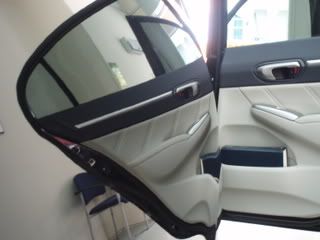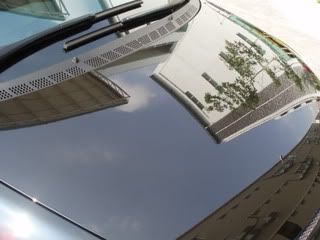Navigation
Install the app
How to install the app on iOS
Follow along with the video below to see how to install our site as a web app on your home screen.
Note: This feature may not be available in some browsers.
More options
Style variation
You are using an out of date browser. It may not display this or other websites correctly.
You should upgrade or use an alternative browser.
You should upgrade or use an alternative browser.
Factory paint...can it be wetsanded?
- Thread starter 99MONGUSE
- Start date
99MONGUSE said:My 99 SS has only 30k on it and I think it would benefit from a light wetsand and buff but I've never wetsanded factory paint, only custom repaints.
OEM finishes are usually much thinner, and i'll only do extra-mild sanding only if its absolutely necessary.
Colour:
If its black, I'll avoid sanding the OEM clearcoat.
In the future, I'll surely get new swirls, spiderwebbing, fine scratches etc. Unavoidable fact of life. If I sand it now, the clearcoat could end up too thin to allow any future extensive compounding.
On lighter colours where swirls are not so noticeable, I might not be doing much compounding in the future, and so, I can afford to do a little mild sanding now.
Usage conditions:
A clearcoat that's become excessively thin and of insufficient film-build thickness (after a certain degree of sanding), can no longer offer UV protection and might eventually lead to clearcoat failure. This is especially serious when the vehicle is mostly parked outside in a hot, sunny environment. I've seen many OEM clearcoat failure on many expensively detailed cars involving extensive sanding and compounding.
If the car is garaged mostly, then this might not be a problem.
Honda OEM clearcoats are extremely thin, and using 1500grit is quite risky.
On such thin clears, I do a very light 1500g, followed by a 3000g. This buffs out very easily with Megs Diamond Cut. Look at pic below. OEM Nighthawk Black on Honda. Super soft and super thin clearcoat.
Front car door opened.
Rear car door closed. You're looking at mostly of reflection on the rear door surface.
Sanded, extensively prepped and 3layers Zaino Z2Pro+ZFX.

Another Honda job involving sanding of OEM clearcoat.

I'm quite certain your SS's clearcoat is thicker than a Honda, so you can probably start with a very mild 1500grit run first. You won't get rid of all orange-peel, but it sure helps improve the finish in an efficient manner, compared to just compounding alone.
Dan
Well-known member
If by SS you mean a GM product... hell no. GM paint is the worst in the industry, its not uniform in smoothness or thickness. Unless you take the time to do a paint map with about 2" resolution, you are really risking breaking into the base coat.
Accumulator
Well-known member
I wouldn't want to diminish my future ability to perform correction and/or have to worry about UV exposure. IMO, clear gets thinned enough just with normal correction.
Accumulator said:I wouldn't want to diminish my future ability to perform correction and/or have to worry about UV exposure. IMO, clear gets thinned enough just with normal correction.
Agree with you - Why thin the clearcoat unnecessarily
Some of my customers are young car owners who've just become a "detailing enthusiast" and are voraciously absorbing all the interesting Internet write-ups about orange peel and how sanding comes into the picture.
But most of them are not aware of the cost of detailing jobs that involve sanding, the time involved and the possible problems in the future.
However, some of them are aware of the cons, and still don't care about long-term implications, and are more concerned with taking before and after photos to show off to their friends and fellow car club members...and they insist that I proceed with sanding.
Accumulator
Well-known member
gigondaz- Heh heh, those same people might then expect you to work miracles after their perfectly smooth and oh-so-thin clear gets marred up! Bet they'll be all ticked off when you tell 'em "that scratch is about 8 microns deep, and you can't spare that much clear".
LOL! Good point.
That's why on any mega-buck job involving sanding, I spend at least 30min-1hr having a chat with the customer and laying out all the facts to him/her. These facts will also be emailed to the customer. He is required to sign that email, and I'll keep the original copy.
I hv never come across a customer who complained in the future, but most of them ended up changing cars, and demand to have the same crazy job done again on their new car. That's approx 45% of my business now, and could take up to 5days.
That's why on any mega-buck job involving sanding, I spend at least 30min-1hr having a chat with the customer and laying out all the facts to him/her. These facts will also be emailed to the customer. He is required to sign that email, and I'll keep the original copy.
I hv never come across a customer who complained in the future, but most of them ended up changing cars, and demand to have the same crazy job done again on their new car. That's approx 45% of my business now, and could take up to 5days.
Accumulator
Well-known member
gigondaz- Heh heh, see...I approach it a bit differently not being a pro. My wife and I can keep some cars a loooong time (decades) and it seems that as soon as I think I've thinned the paint so much I can never touch it again, some [idiot] brushes against it or something and I have to do just-one-more correction after all!
When it comes to jobs involving sanding, always think about practicality and prudence.
On my own showcar with aftermarket paint that's been extensively wetsanded, I keep it inside the shop 24hrs and it says "Do Not Touch" to deter any itchy fingers.
No longer a practical vehicle. Sigh! But a good conversation piece though! LOL.
On my own showcar with aftermarket paint that's been extensively wetsanded, I keep it inside the shop 24hrs and it says "Do Not Touch" to deter any itchy fingers.
No longer a practical vehicle. Sigh! But a good conversation piece though! LOL.
